Breadcrumb
Research on Spatial Memory & Communication
Spatial Memory
The Development of Spatial Clustering Skills
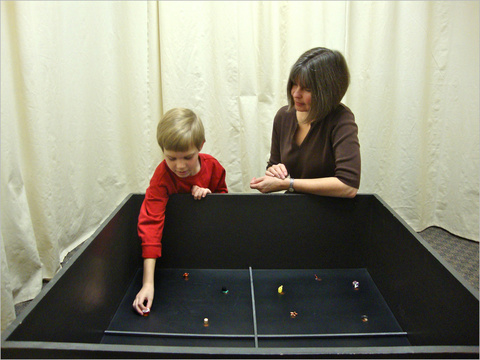
Our early work on the development of children’s spatial clustering skills focused on children's ability to use spatial clustering as an organizational strategy (Plumert, 1994; Plumert et al., 1994; Plumert & Strahan, 1997). For example, a child might organize an Easter egg hunt by retrieving all of the Easter eggs in one region (e.g., the back yard) before retrieving those in another region (e.g., the front yard). Likewise, a person might organize recall of the furniture in his home by recalling all the things in one room (e.g., the living room) before moving onto other rooms (e.g., kitchen). As with other memory strategies, spatial clustering serves an important function of enhancing the number of items one can recall.
Our earlier work showed that even 6-year-olds exhibited high levels of spatial clustering when physically searching for a set of objects (Plumert et al., 1994). However, when they told someone else how to find those same objects, their directions were disorganized. Quite likely, children’s searches were more spatially organized than their directions because the structure of the space helped constrain their movements.
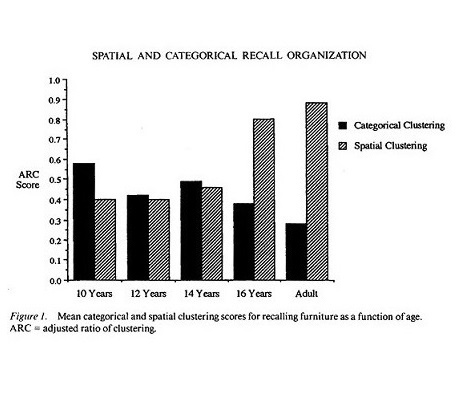
This work led to the question of how the use of spatial clustering strategies to organize recall develops over childhood. At that point, there was an extensive literature on children’s use of categorical clustering strategies in recall, but almost no work on children’s use of other kinds of organizational strategies. We were interested in how children’s preference for spatial vs. categorical organizational strategies changes with development. We studied this by having 10-, 12-, 14-, 16-year-olds and adults do a furniture inventory of their home from memory (Plumert, 1994). Recalling furniture is an interesting task, because objects can be organized categorically (by type of furniture) or spatially (by room). Surprisingly, we found that 10-year-olds significantly preferred to organize their recall by object category rather than spatial region. By the age of 16, children clearly used the adult strategy of organizing their recall by spatial region. This suggests that spontaneous use of spatial clustering strategies may be a late-developing skill, particularly when competing strategies are available.
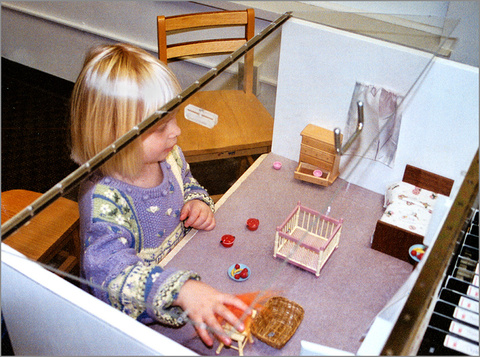
This work led us to ask how the task may influence children’s use of spatial clustering strategies in their recall (Plumert & Strahan, 1997). We studied this by asking 6-, 8-, and 10-year-olds to learn the locations of 16 objects in a 4-room dollhouse. After they learned the locations, they performed either a free recall test or planned a tour of the objects for a doll figure. Interestingly, we found that 8- and 10-year-olds were significantly more likely to use a spatial clustering strategy when planning a tour than performing free recall of the objects. Six-year-olds showed low levels of spatial clustering regardless of the task.
Note that all aspects of the experiment were the same up to the point children were given the task instructions, indicating that spatial clustering emerged out of the interaction of the child and the task.
Using Spatial Groups to Remember Object Positions
But does forming a spatial category (e.g., grouping furniture items by room) also play a role in how children and adults remember object positions? In particular, do people think that locations from the same spatial category are closer together than they really are?
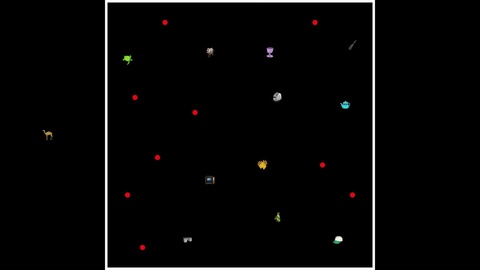
Our basic task involves a learning and a test phase. Participants first learn the locations of 20 miniature objects marked by dots on either the floor of an open, square box placed on the floor of a laboratory room or inside a white, square frame drawn on a large touch-screen monitor. We typically provide structure during learning (e.g., boundaries subdividing the box into quadrants) so that the locations are organized into four groups of five locations. Participants first watch while the experimenter names the objects and places them one at a time on the dots until all 20 objects have been placed. The experimenter then gives the objects to participants one at a time and asks them to try to place them on the correct dots. The test phase begins after participants reach a learning criterion of placing all the objects correctly in a single trial. During test, participants attempt to place the objects in the correct locations without the aid of the dots marking the locations and other structure organizing the locations (e.g., boundaries). It is important to note that participants are given no foreknowledge of the test prior to this point in the session. Our primary measures are mean and variable error (computed based on the absolute distance from the correct locations) and center displacement (the degree to which people place the objects belonging to the same spatial group closer together than they actually are).
We are particularly interested in understanding how “decisions” about where to place objects at test emerge out of the interaction of available environmental structure and the cognitive processes involved in coding, maintaining, and retrieving spatial information (Plumert, 2008). Our work uses experimental manipulations of environmental structure (e.g., imposing boundaries that divide locations into groups) and the cognitive system (e.g., strengthening fine-grained memory through repeated opportunities for learning) to reveal the nature of the underlying interactions that govern object placements.
We have examined how spatial bias emerges out of interactions of environmental structure and coding processes by providing cues for organizing the locations into groups during learning. In particular, we have examined how children and adults use visible boundaries subdividing the space, experience with visiting nearby locations close together in time, and categorical relatedness between objects occupying the same region to organize the locations into groups, leading to systematic variations in spatial bias at test (Hund & Plumert, 2003, 2005; Hund, Plumert, & Benney, 2002; Plumert & Hund, 2001). We find that adults always show spatial bias whenever even a single cue is present during learning to organize the objects into groups. Children often only show spatial bias when multiple cues are available during learning to organize the objects into groups. Our current work focuses on how children and adults use information about object categories to form spatial groups.
Spatial Communication
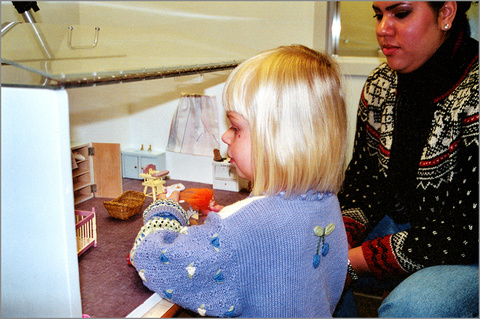
A primary focus of our work on spatial communication is understanding the factors that influence the selection and organization of information in spatial descriptions and directions. In our studies with young children, we look at the problem of disambiguating identical locations for a listener (e.g., “it’s under the pillow on the couch in the living room”). One factor that plays an important role in young children’s ability to use a larger landmark to disambiguate a smaller landmark is the nature of the spatial relation between the two landmarks (Plumert et al., 1995; Plumert & Hawkins, 2001). We find that both 3- and 4-year-olds are more likely to refer to a large landmark when the small landmark is on or in the large landmark than when it is next to the large landmark. Supporting or containing landmarks may be easier for young children to use because they involve functional relations between objects (e.g., a pillow on a couch moves with the couch).
The child’s age plays an important role in how parents disambiguate identical locations for their young children (Plumert & Nichols-Whitehead, 1996; Plumert et al., 2012). Our older work shows that when 3-year-olds give ambiguous directions, parents often respond with directive prompts (“I see two pillows. Is it the one on the couch or the one on the chair?”). When 4-year-olds give ambiguous directions, however, parents often respond with non-directive prompts (“I see two pillows, which one is it?”). Our more recent work has shown that 3.0-year-old children are more likely to successfully find an object when mothers use person-based frames of reference (“It’s in the jar close to mommy”) than landmark-based frames of reference (“It’s in the jar close to the blue circle”). By the time children are 3.5 years of age, they are equally adept at using either type of reference frame to find an object. This suggests that person-based frames of reference may hold a special status for young children as a bridge between using egocentric and allocentric frames of reference to communicate about location.
A factor that plays an important role in how adults organize spatial information is the goal of the task (Plumert et al., 1994, 1995). That is, people prefer to order spatial units (i.e., landmarks and regions) in an ascending hierarchical order (i.e., from small to large) when describing where objects are located, but they prefer to order spatial units in a descending hierarchical order (i.e., from large to small) when giving direction s for finding objects (e.g., “Go upstairs and look in the master bedroom on the dresser by the book.”). When giving directions, the goal is to get the listener from her present position to the desired location. Speakers meet this goal by conveying units of spatial information in the order in which they will be encountered by the listener. Our later work showed that adults access their memory for object locations in an order of small to large landmarks, indicating that they reorder landmarks when giving directions to a listener (Plumert, Spalding, & Nichols-Whitehead, 2001).